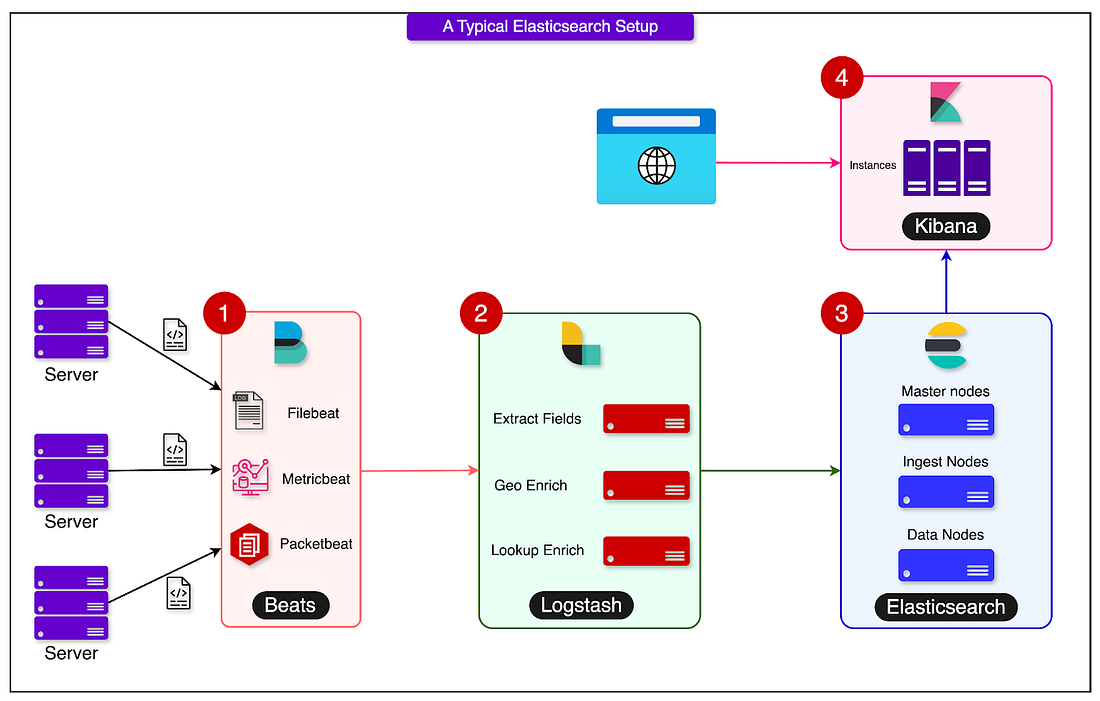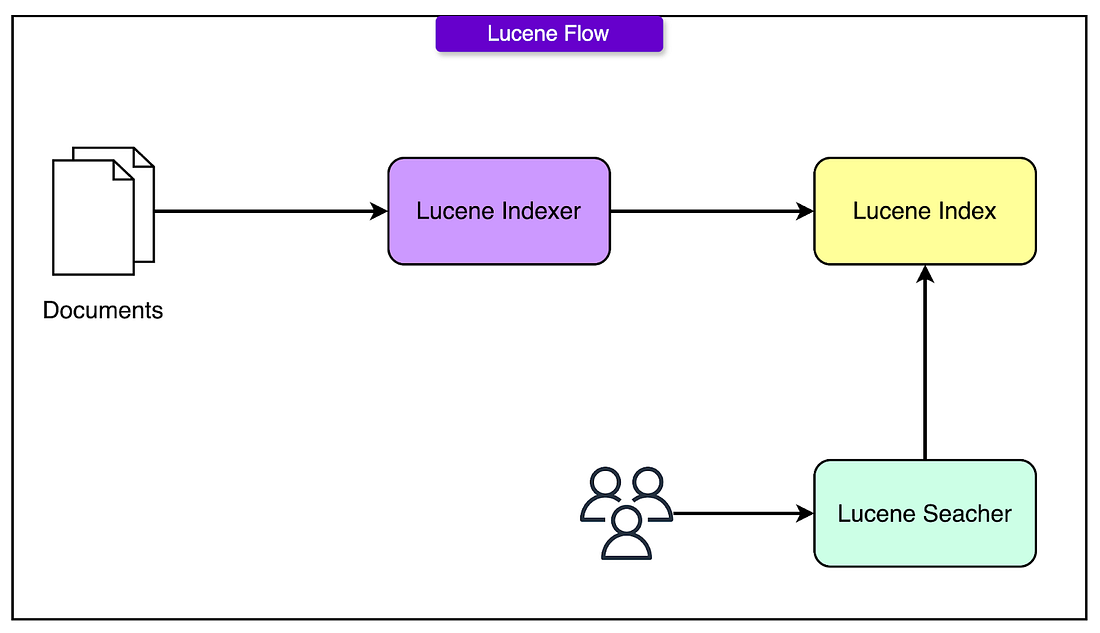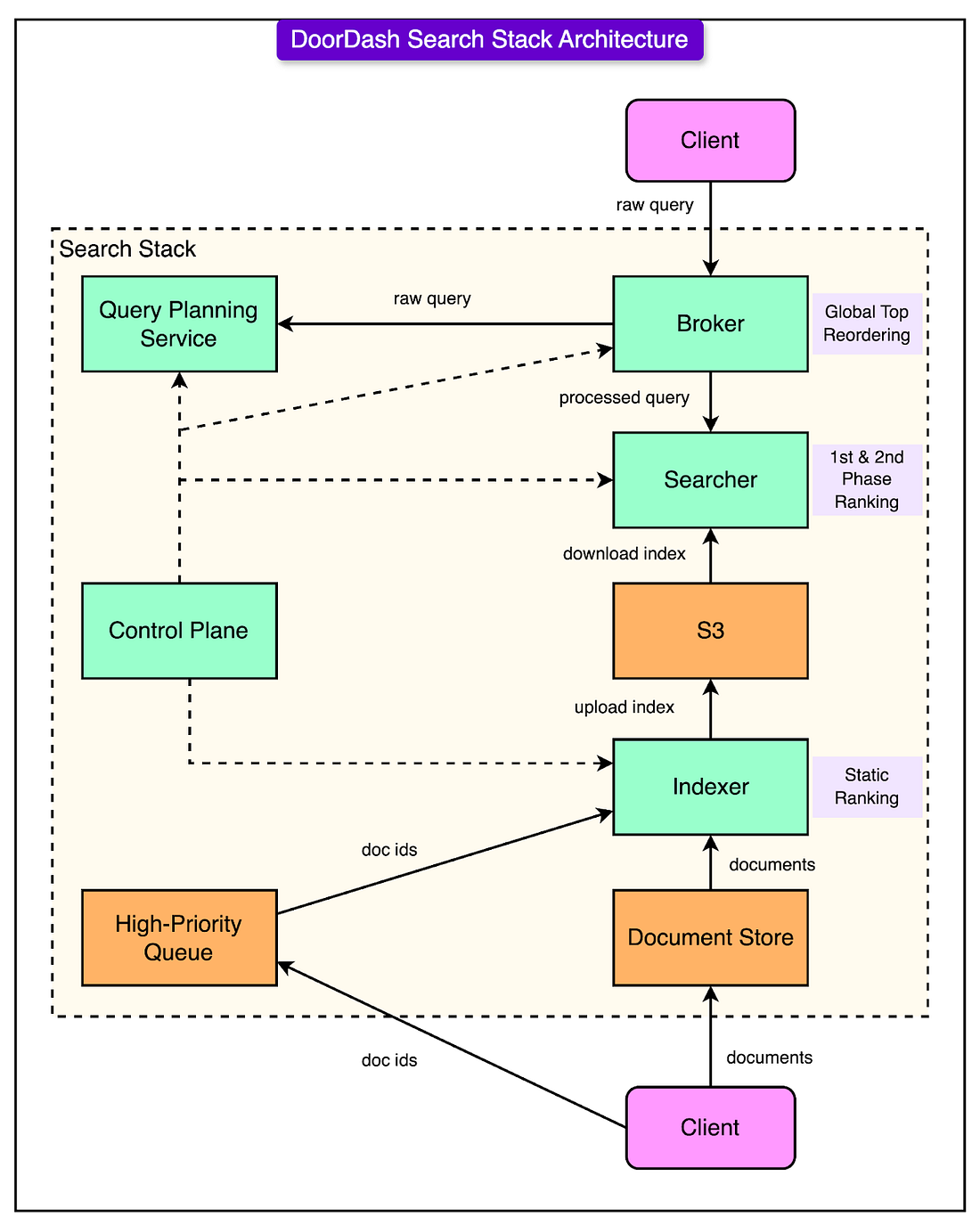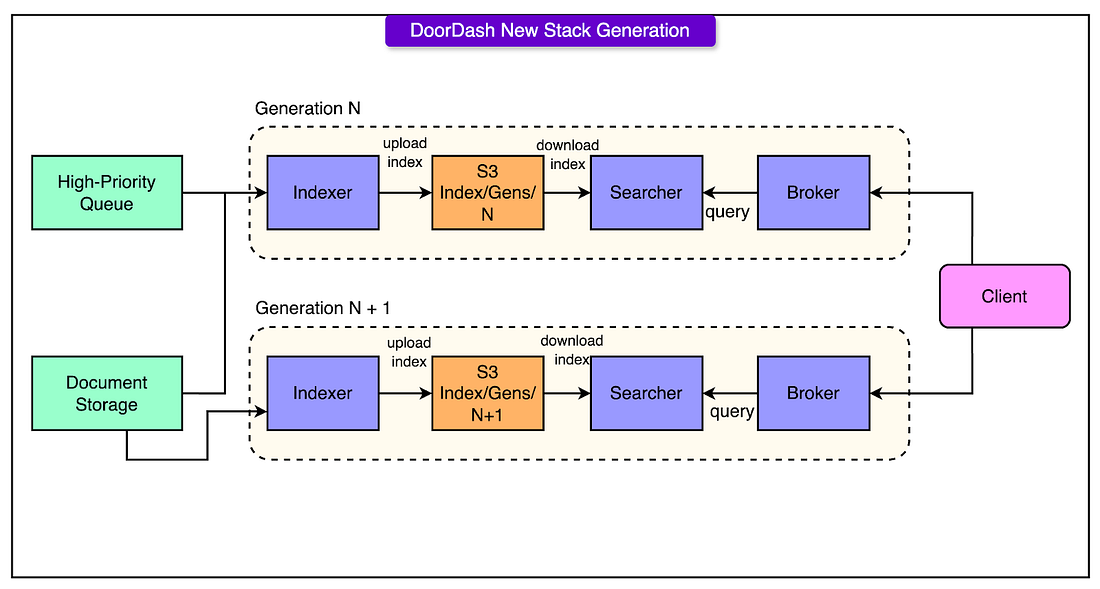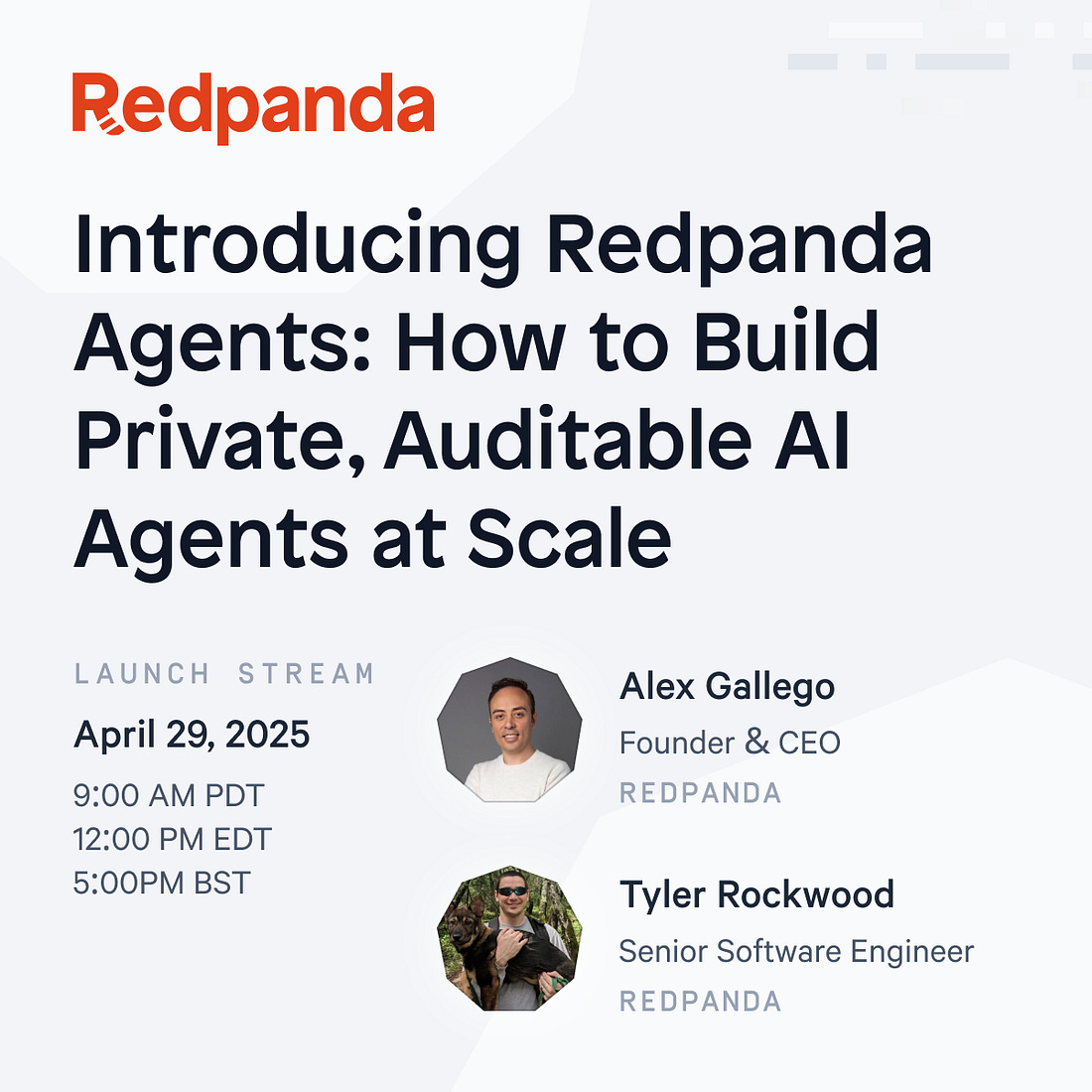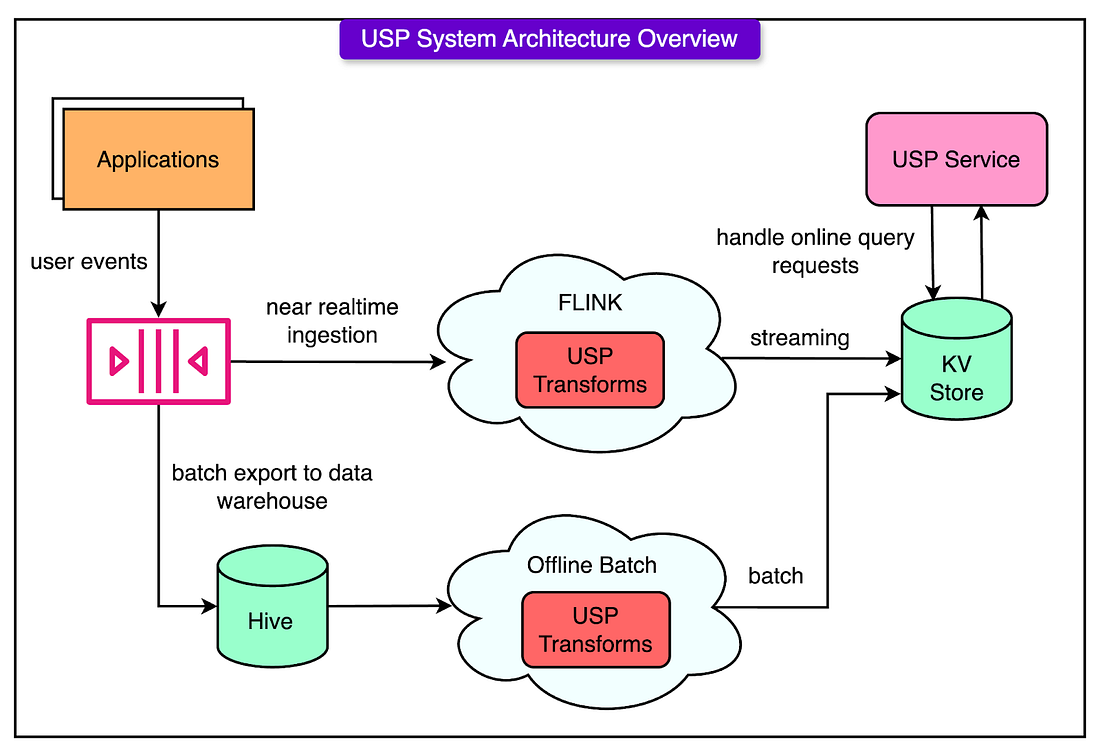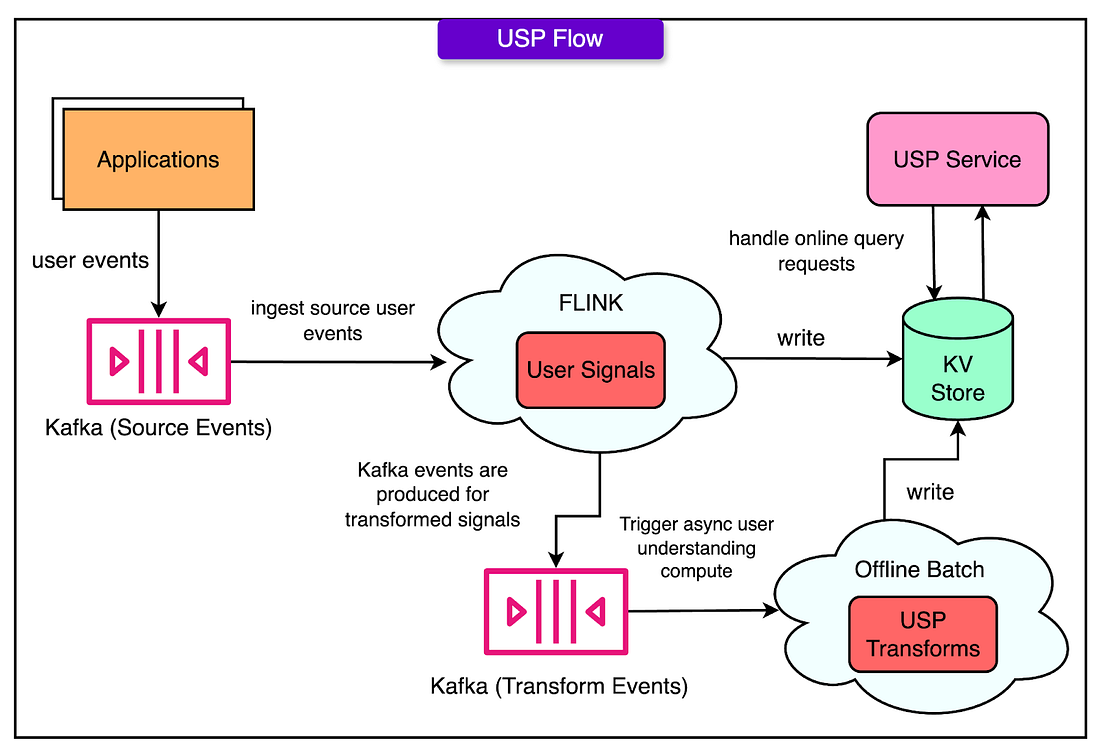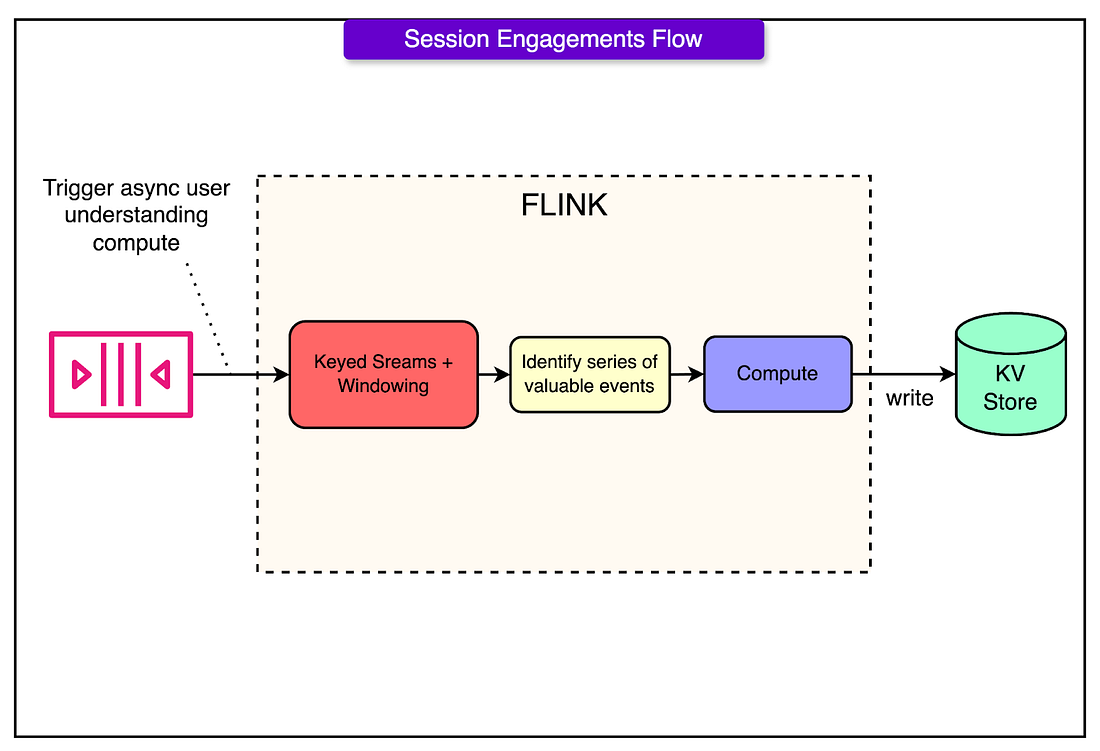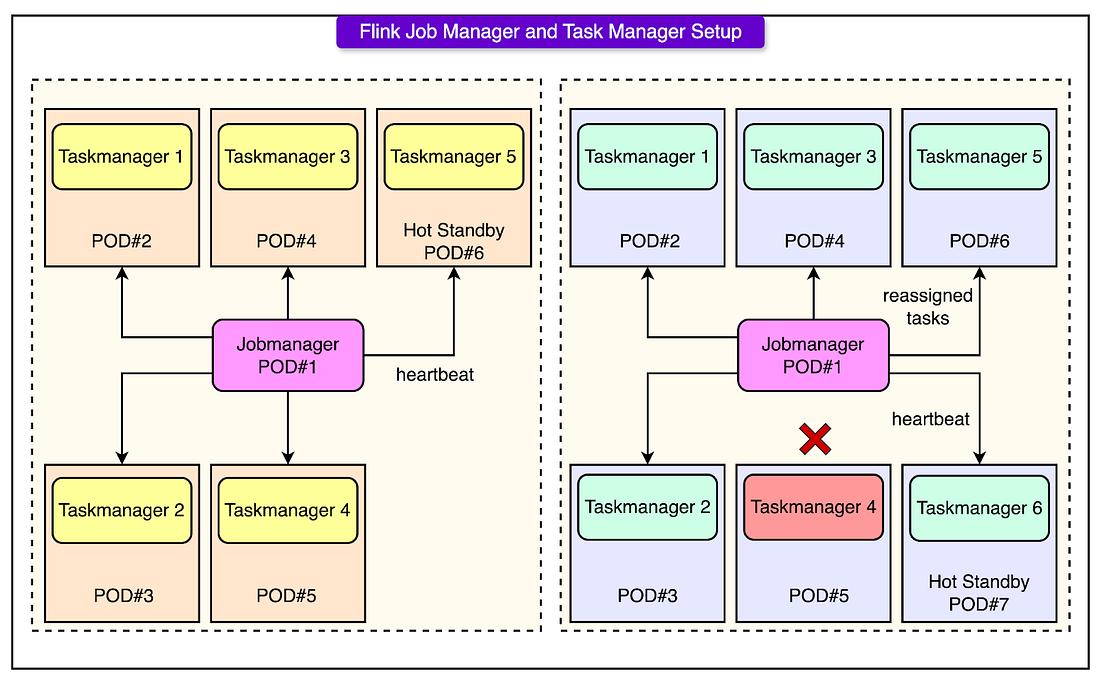Archives
- By thread 5369
-
By date
- June 2021 10
- July 2021 6
- August 2021 20
- September 2021 21
- October 2021 48
- November 2021 40
- December 2021 23
- January 2022 46
- February 2022 80
- March 2022 109
- April 2022 100
- May 2022 97
- June 2022 105
- July 2022 82
- August 2022 95
- September 2022 103
- October 2022 117
- November 2022 115
- December 2022 102
- January 2023 88
- February 2023 90
- March 2023 116
- April 2023 97
- May 2023 159
- June 2023 145
- July 2023 120
- August 2023 90
- September 2023 102
- October 2023 106
- November 2023 100
- December 2023 74
- January 2024 75
- February 2024 75
- March 2024 78
- April 2024 74
- May 2024 108
- June 2024 98
- July 2024 116
- August 2024 134
- September 2024 130
- October 2024 141
- November 2024 171
- December 2024 115
- January 2025 216
- February 2025 140
- March 2025 220
- April 2025 233
- May 2025 239
- June 2025 303
- July 2025 182
-
Trusted Intermediates for Pharma Companies
Dear info,
Greetings from Jinan Tochem Co., Ltd. My name is Pierce Huang, and we are a reputable supplier of high-quality chemical intermediates used in pharmaceuticals, agrochemicals, and dyestuffs etc.
Our company is dedicated to supporting pharmaceutical companies with reliable intermediates that optimize production efficiency and product quality. We understand the critical role these components play in your business, and we strive to provide the best solutions available.
I would appreciate the opportunity to explore how our products can benefit your operations. Please feel free to reach out for more details or to arrange a discussion at your convenience.
If you can reply me, I will send you more pictures and company profile to you.
Best regards,
Pierce Huang
Business manager
Jinan Tochem Co., Ltd
Phone/whatsapp:86-18765821929
by "Walter Conan" <deangelo91723@gmail.com> - 05:53 - 22 Apr 2025 -
[48 HRS] Claim Your Free Dropshipping Store
Russell’s giving stores away at the masterclass!Yesterday was a big announcement letting you know ClickFunnels Dropshipping is here and ready for you to dive in!
And to help you feel comfortable with all the new features and tools, we are hosting a ClickFunnels Dropshipping Masterclass on Thursday @ 11AM PT | 2PM ET
During the live class, Russell and Jared Jared Goetz (CEO of Zendrop) are showing you how you can combine ClickFunnels’ amazing new storefronts with Zendrop’s backend to give you everything you need to launch and start selling Ecom in minutes!
Our partnership with Zendrop is a gamechanger!
You can jump on with Russell and Jared Goetz LIVE this Thursday, April 24th @ 11AM PT | 2PM ET!
REGISTER FOR THE CLICKFUNNELS DROPSHIPPING MASTERCLASS >>
Hope you can make it!
Todd Dickerson
P.S. Russell is going to give you a pre-built store for showing up to this LIVE masterclass, but you MUST attend the live masterclass to get it. REGISTER HERE!
© Etison LLC
By reading this, you agree to all of the following: You understand this to be an expression of opinions and not professional advice. You are solely responsible for the use of any content and hold Etison LLC and all members and affiliates harmless in any event or claim.
If you purchase anything through a link in this email, you should assume that we have an affiliate relationship with the company providing the product or service that you purchase, and that we will be paid in some way. We recommend that you do your own independent research before purchasing anything.
Copyright © 2018+ Etison LLC. All Rights Reserved.
To make sure you keep getting these emails, please add us to your address book or whitelist us. If you don't want to receive any other emails, click on the unsubscribe link below.
Etison LLC
3443 W Bavaria St
Eagle, ID 83616
United States
by "Todd Dickerson (ClickFunnels)" <noreply@clickfunnelsnotifications.com> - 03:05 - 22 Apr 2025 -
America at 250: An introduction
7 essays on the opportunities ahead Brought to you by Drew Ungerman (Drew_Ungerman@McKinsey.com), global leader of McKinsey’s Public Sector Practice
New from McKinsey & Company
Email 1 of 8
•
April 23: Business in a new geopolitical era
•
April 24: US government productivity
•
April 25: Performance for state governments
•
April 28: Empowering the US workforce
•
April 29: Powering a new era of energy demand
•
April 30: Advancing America's holistic health
•
May 1: ‘Inside-out' leadership
Subscribe to our Public Sector alert list to get the full America at 250 email series—plus future updates about McKinsey’s Public Sector insights. As always, you may opt out at any time.
This email contains information about McKinsey’s research, insights, services, or events. By opening our emails or clicking on links, you agree to our use of cookies and web tracking technology. For more information on how we use and protect your information, please review our privacy policy.
You received this email because you are a registered member of mckinsey.com.
Copyright © 2025 | McKinsey & Company, 3 World Trade Center, 175 Greenwich Street, New York, NY 10007
by "McKinsey & Company" <publishing@email.mckinsey.com> - 02:11 - 22 Apr 2025 -
How DoorDash’s In-House Search Engine Achieved a 50% Drop in Latency
How DoorDash’s In-House Search Engine Achieved a 50% Drop in Latency
🚀Faster mobile releases with automated QA (Sponsored)͏ ͏ ͏ ͏ ͏ ͏ ͏ ͏ ͏ ͏ ͏ ͏ ͏ ͏ ͏ ͏ ͏ ͏ ͏ ͏ ͏ ͏ ͏ ͏ ͏ ͏ ͏ ͏ ͏ ͏ ͏ ͏ ͏ ͏ ͏ ͏ ͏ ͏ ͏ ͏ ͏ ͏ ͏ ͏ ͏ ͏ ͏ ͏ ͏ ͏ ͏ ͏ ͏ ͏ ͏ ͏ ͏ ͏ ͏ ͏ ͏ ͏ ͏ ͏ ͏ ͏ ͏ ͏ ͏ ͏ ͏ ͏ ͏ ͏ ͏ ͏ ͏ ͏ ͏ ͏ ͏ ͏ ͏ ͏ ͏ ͏ ͏ ͏ ͏ ͏ ͏ ͏ ͏ ͏ ͏ ͏ ͏ ͏ ͏ ͏ ͏ ͏ ͏ ͏ ͏ ͏ ͏ ͏ ͏ ͏ ͏ ͏ ͏ ͏ ͏ ͏ ͏ ͏ ͏ ͏ ͏ ͏ ͏ ͏ ͏ ͏ ͏ ͏ ͏ ͏ ͏ ͏ ͏ ͏ ͏ ͏ ͏ ͏ ͏ ͏ ͏ ͏ ͏ ͏ ͏ ͏ ͏ ͏ ͏ ͏ ͏ ͏ ͏ ͏ ͏ ͏ ͏ ͏ ͏ ͏ ͏ ͏ ͏ ͏ ͏ ͏ ͏ ͏ ͏ ͏ ͏ ͏ ͏ ͏ ͏ ͏ ͏ ͏ ͏ ͏ ͏ ͏ ͏ ͏ ͏ ͏ ͏ ͏ ͏ ͏ ͏ ͏ ͏ ͏ ͏ ͏ ͏ ͏ ͏ ͏ Forwarded this email? Subscribe here for more🚀Faster mobile releases with automated QA (Sponsored)
Manual testing on mobile devices is too slow and too limited. It forces teams to cut releases a week early just to test before submitting them to app stores. And without broad device coverage, issues slip through.
QA Wolf’s AI-native service delivers 80% automated test coverage in weeks, with tests running on real iOS devices and Android emulators—all in 100% parallel with zero flakes.
QA cycles reduced to just 15 minutes
Multi-device + gesture interactions fully supported
Reliable test execution with zero flakes
Human-verified bug reports
Engineering teams move faster, releases stay on track, and testing happens automatically—so developers can focus on building, not debugging.
Rated 4.8/5 ⭐ on G2
Disclaimer: The details in this post have been derived from the articles written by the DoorDash engineering team. All credit for the technical details goes to the DoorDash Engineering Team. The links to the original articles are present in the references section at the end of the post. Some details related to Apache Lucene® have been taken from the Apache Lucene® official documentation. Apache Lucene® is a registered trademark of The Apache Software Foundation. We’ve attempted to analyze the details and provide our input about them. If you find any inaccuracies or omissions, please leave a comment, and we will do our best to fix them.
Elasticsearch is a proven, battle-tested search engine used by thousands of companies.
However, what works at one scale can fall apart at another. And for a company like DoorDash, operating across continents with a complex marketplace of stores, items, and logistics, things get complicated fast.
By early 2022, the cracks in the foundation were hard to ignore.
Originally, DoorDash's global search was focused on stores. For example, you would search for “pizza” and get nearby pizzerias. That’s a straightforward lookup: return documents tagged with pizza, sorted by location. But over time, user expectations evolved. People wanted to search for specific items, which meant the search had to understand not just where to order, but what they wanted.
To accommodate this shift, the system needed to:
Search across multiple document types.
Handle many-to-one and parent-child relationships.
Filter and rank results based on real-time availability, geo-location, user context, and business logic.
Elasticsearch wasn’t built for this. And though it could be forced to work for these requirements, it needed a lot of work from the engineering team.
Why Elasticsearch Wasn’t Sufficient?
Elasticsearch is a widely adopted solution across modern enterprises. See the diagram below that shows a typical Elasticsearch setup with Logstash and Kibana:
However, for DoorDash, it wasn’t sufficient for a few reasons.
At the heart of the issue was Elasticsearch’s document replication model.
In theory, this model ensures redundancy and resilience. In practice, it introduced significant overhead that made it hard to scale horizontally under DoorDash’s workload. Every document indexed needed to be replicated across nodes, which meant more disk I/O, more network chatter, and more coordination overhead. This became especially painful as the platform grew and indexing volumes spiked.
The second problem was deeper: Elasticsearch doesn’t natively understand relationships between documents. It treats each document as an island, which is fine if you’re searching blog posts or log files. But DoorDash needed to connect the dots between stores and items, and those relationships were critical. For example, if a store goes offline, its items shouldn't show up in search results.
And then, there’s query understanding and ranking. DoorDash needed custom ranking logic, ML-powered relevance tuning, and geo-personalized scoring. With Elasticsearch, all of that had to live outside the engine (in client code, pipelines, or upstream systems), making it fragile and hard to evolve.
Design Principles Behind DoorDash’s In-House Search
To solve the challenges with Elasticsearch, DoorDash decided to build a search engine that could meet their requirements.
However, DoorDash didn’t want to reinvent information retrieval from scratch.
Instead, they built a focused, high-performance engine on top of a battle-tested core and architected everything around flexibility, scalability, and isolation.
Apache Lucene® at the Core
Apache Lucene® is not a search engine. It’s a low-level library for indexing and querying text. Think of it like a database engine without the database: no cluster management, no networking, no APIs.
DoorDash picked Apache Lucene® for multiple reasons:
It’s fast, mature, and widely understood.
Apache Lucene® gives you primitives to build exactly what you want.
It’s already trusted by Elasticsearch and Solr under the hood.
However, Apache Lucene® was just the foundation. DoorDash wrapped it in their opinionated services, custom-built for how they think about search, traffic, scaling, and business logic. This gave them full control over performance, extensibility, and cost.
From Document Replication to Segment Replication
In Elasticsearch, every update means replicating full documents across nodes. That sounds fine until you’re processing thousands of changes per second.
DoorDash found a better way: segment replication.
Instead of duplicating documents, they replicate Apache Lucene® index segments: the actual on-disk structures built during indexing. This gave them some benefits:
Optimize indexing and search performance
Reduced compute cost since the work of indexing only happens on the primary node, not on all replicas.
Increased indexing throughput
By treating segments as the unit of replication, the system was able to cut down on churn and keep search nodes lean and stable.
Decoupling Indexing and Search
A common failure pattern in search systems is coupling the write and read paths too tightly. If indexing spikes, search slows down. If queries pile up, indexing stalls. DoorDash didn’t want that.
So they split things cleanly:
The Indexer Service builds Apache Lucene® segments and writes them to Amazon S3. It is a non-replicated service because horizontally scaling the indexer means increasing the number of index shards, which could be expensive.
The Searcher Service (fully replicated) downloads segments from S3 and serves queries.
The payoff from this was huge. Indexers scaled based on write load while searchers scaled based on read traffic. Neither was able to bring the other down.
Key Components of DoorDash’s Search Engine
The diagram below shows the high-level search stack architecture implemented by DoorDash:
There are four main components within the DoorDash Search Engine. Let’s look at each in detail:
1 - The Indexer
The indexer is the part of the system that turns raw data, menus, store info, and item availability into Lucene® segments that can be queried efficiently. It doesn’t serve any queries. It’s a write-only pipeline, pushing finalized Apache Lucene® segments to S3, where searchers can pick them up.
But not all data is created equal. Some changes need to go live now (like a store going offline). Others can wait (like a new menu item added for next week). DoorDash handles this with two-tiered indexing:
High-priority updates: Think availability toggles, store closures, or price changes. These updates go in immediately and are critical to the user experience.
Bulk updates: These are less time-sensitive and processed during scheduled full index rebuilds, typically every six hours.
This strategy balances freshness with performance. If everything were indexed immediately, it could choke the pipeline. If everything were batch, the results might be stale. Splitting the path lets the system stay fast and accurate.
2 - The Searcher
Searchers are replicated services that download prebuilt segments from S3 and use them to answer user queries.
Here are some key points about them:
Searchers never deal with indexing traffic. In other words, they’re not impacted by write spikes.
Scale horizontally based on read traffic
Can be swapped in and out without reindexing since segments are immutable and versioned.
This separation of concerns keeps the system stable. Even when indexing is busy, search stays fast. When search traffic spikes, indexing stays on track.
3 - The Broker
In a distributed search system, results live across many shards. So when someone searches for a term, the system has to:
Fan out the query to every relevant shard.
Collect and merge the results.
Rank and return them.
That’s the broker’s job.
But the broker doesn’t just forward the query. Before it does anything, it runs the input through a Query Understanding and Planning Service. That means the raw user input, misspellings, synonyms, and location context get transformed into a clean, semantically rich query that makes sense to the engine.
4 - Query Planning and Understanding
Search is only as good as your query. Users don’t always type what they mean. Also, different business units might need different ranking models or filter rules.
Rather than pushing all this logic to clients (which would create duplication, drift, and pain), DoorDash centralized it in a Query Planning & Understanding service.
This layer:
Rewrites user queries based on business logic, schema knowledge, and user context.
Applies rules and transformations specific to the index type (item vs. store).
Encodes ranking strategies and computed field logic.
This way, the clients don’t need to micromanage the query structure. They send high-level intent, and the query planner handles the complexity.
Index Schema and Query Language
Search systems tend to break down in one of two ways:
The schema is too rigid, so every new use case needs a hack.
The query language is too abstract, so business logic ends up buried in unreadable config or client code.
DoorDash tackled both problems head-on. They built a declarative, expressive, and extensible schema system, one that treats search not as text matching, but as structured, contextual information retrieval.
Declarative Index Configuration
The first principle was the separation of concerns: business logic belongs in the schema, not scattered across codebases. So DoorDash lets teams define their search behavior declaratively, using three core concepts:
1 - Indexed Fields
These are the raw ingredients that get stored in Apache Lucene®’s inverted index. They can be:
Text fields: Tokenized and scored with models like BM25.
Numeric values or doc values: Used for filtering, sorting, or boosting.
KNN vectors: For semantic search or embedding-based matching.
Dimensional points: Useful for things like geo-search or price ranges.
These are processed at index time: fast to query, static until reindexed.
2 - Computed Fields
Computed fields are evaluated at query time, based on:
The query itself
Indexed field values
Other computed fields
3 - Query Planning Pipelines
This is the glue that connects intent to execution.
A query planning pipeline takes a raw user query, often incomplete, messy, or ambiguous, and transforms it into a structured, executable search query.
This logic lives in one place, not hardcoded into clients, so it’s easy to version, update, and reuse.
Namespaces and Relationships
You can’t build a real-world search engine without modeling relationships.
At DoorDash, stores contain items, and that relationship matters. You don’t want orphaned items showing up when the parent store is closed. To model this, the schema supports namespaces (strongly typed document classes) and relationships between them.
Each namespace represents a distinct document type, such as store, item, and category. These document types have their fields, index settings, and logic.
DoorDash supports two types of relationships between namespaces, each with trade-offs:
In local-join, the child is indexed only if the parent references it. This is used when flexibility matters.
In block-join, the parent and children are indexed together as one unit. This is used when optimizing for latency, and there’s no problem in reindexing batches.
SQL-Like Query Language
DoorDash built a SQL-like API that lets teams describe queries cleanly and clearly. This language supports:
Keyword groups: For example, search by synonyms, stems, categories
Filter constraints: Price range, geo-radius, rating threshold
Sorting: By score, distance, freshness, or any custom logic
Join and dedupe operations: Avoid duplicate listings or improperly scoped results
Field selection: Return only the necessary fields for downstream systems
The query language gives engineers a clean, readable way to build powerful queries. It also sets a consistent contract between teams.
Search Stack Isolation and Control Plane
Most shared systems eventually buckle under their weight, not because the core logic fails, but because tenants step on each other’s toes, deployments collide, and configuration drift creates subtle, hard-to-debug bugs.
DoorDash saw that coming and made a bold design call: every index gets its isolated search stack. It’s not the lightweight approach. But it’s one of the most reliable.
Think of a search stack as a self-contained search engine in a box. It includes:
An Indexer for building Apache Lucene® segments.
One or more Searchers for serving queries.
A Broker that fans out, aggregates, and ranks.
Schema, config, and version metadata that are scoped only to that index.
Each stack is tied to a specific index and use case, like global item search, store discovery, or promo campaign lookup.
This design brings a lot of operational ease due to the following reasons:
Stability: If a bad index config or corrupted segment takes down one stack, the others stay up.
Flexibility: Different teams can use different query planners, schemas, ranking models, or pipelines without coordination.
Traceability: Resource usage, query performance, and indexing lag can all be scoped to the owning team. No more finger-pointing during incident reviews.
One question, however, remains: if every team has its stack, how do you manage rollouts, schema changes, and new deployments without introducing chaos?
That’s where the control plane steps in. It’s an orchestration layer responsible for:
Rolling out new generations of a search stack.
Managing versioned deployments (code + schema + config).
Gradually scaling up new instances and decommissioning old ones.
Conclusion
Rebuilding core infrastructure is always risky and complex. So when DoorDash migrated off Elasticsearch, the stakes were high. But the outcome was worth it.
Here are some gains they achieved:
50% reduction in p99.9 latency. This isn’t average latency but tail latency that has the most impact during high-traffic moments. Halving p99.9 means fewer timeouts, smoother user experience, and less need to overprovision.
75% drop in hardware costs. By cutting down redundant computation, reducing replication overhead, and better workload isolation, DoorDash dramatically lowered the footprint of its search infrastructure.
Ultimately, DoorDash didn’t just build a search engine but an entire platform that runs faster, costs less, and adapts better to future needs.
Note: Apache Lucene® is a registered trademark of the Apache Software Foundation.
References:
SPONSOR US
Get your product in front of more than 1,000,000 tech professionals.
Our newsletter puts your products and services directly in front of an audience that matters - hundreds of thousands of engineering leaders and senior engineers - who have influence over significant tech decisions and big purchases.
Space Fills Up Fast - Reserve Today
Ad spots typically sell out about 4 weeks in advance. To ensure your ad reaches this influential audience, reserve your space now by emailing sponsorship@bytebytego.com.
Like
Comment
Restack
© 2025 ByteByteGo
548 Market Street PMB 72296, San Francisco, CA 94104
Unsubscribe
by "ByteByteGo" <bytebytego@substack.com> - 11:36 - 22 Apr 2025 -
Un point sur la musique chez vous ?
Bonjour,
Vous saviez que 75% des clients disent que la musique influence leur perception d’un magasin ? (source IFOP)
Pourtant, beaucoup subissent encore les pubs et les playlists mal adaptées.
Chez Achilles Coaching Sport Santé, c’est un sujet important ? Vous aimeriez une approche différente ?
Je serais ravi(e) d’échanger avec vous là-dessus.
Romain
by "Romain Rigaud" <romain.rigaud@license-jamendo.fr> - 10:01 - 22 Apr 2025 -
Experience Unforgettable Corporate Hospitality at the Races
Imagine a day filled with the roar of the crowd, the thrill of the finish line... Hello,
Imagine a day filled with the roar of the crowd, the thrill of the finish line, and the finest hospitality to match the occasion. At Corporate Race Day, we specialise in creating memorable experiences at the UK’s most prestigious horse racing events.
Corporate Race Day offers a unique way to combine team building, client appreciation, and networking into one exhilarating event. It’s also the perfect opportunity to advertise and market your company to key stakeholders in a vibrant, prestigious setting.
Our bespoke packages start from just £30 per person, offering an affordable way to entertain your clients, reward your team, or celebrate a special occasion.

Cheltenham Festival (March)

Grand National at Aintree (April)

Scottish Grand National at Ayr (April)
Here’s what makes us stand out:
- Top-tier hospitality at the UK’s leading thoroughbred racing venues.
- Comprehensive support, including:Invite & itinerary management.
- Pre-event coordination.
- Graphic design support for branded materials.
- Onsite event management for a seamless experience.
- Post-event follow-up to ensure lasting impressions.
Explore Our Hospitality Packages Book your package today and let us cater to your every need, creating an unforgettable experience for you and your guests.
Josh Budz
Senior Business Development Manager
joinus@corporateraceday.com
+44 (0)121 2709072
+44 (0)7441 351 701

by "Josh - Corporate Race Day" <joinus@corporateraceday.com> - 03:01 - 22 Apr 2025 -
Positioning organizations to thrive in an evolving trade landscape
On McKinsey Perspectives
Actions to take Brought to you by Alex Panas, global leader of industries, & Axel Karlsson, global leader of functional practices and growth platforms
Welcome to the latest edition of Only McKinsey Perspectives. We hope you find our insights useful. Let us know what you think at Alex_Panas@McKinsey.com and Axel_Karlsson@McKinsey.com.
—Alex and Axel
—Edited by Belinda Yu, editor, Atlanta
This email contains information about McKinsey's research, insights, services, or events. By opening our emails or clicking on links, you agree to our use of cookies and web tracking technology. For more information on how we use and protect your information, please review our privacy policy.
You received this email because you subscribed to the Only McKinsey Perspectives newsletter, formerly known as Only McKinsey.
Copyright © 2025 | McKinsey & Company, 3 World Trade Center, 175 Greenwich Street, New York, NY 10007
by "Only McKinsey Perspectives" <publishing@email.mckinsey.com> - 01:36 - 22 Apr 2025 -
Get Ahead: AI Strategies to Unlock New Opportunities
Propel your business forward with the latest AI tacticsGet Ahead: AI Strategies to Unlock New Opportunities
Agentforce:
Driving Innovation Every DayTransforming ASEAN Business with AI

ASEAN Trailblazer Spotlight
Singapore Airlines and Salesforce Collaborate on AI-Powered Customer Service
Singapore Airlines has partnered with Salesforce to enhance customer service by leveraging Agentforce, Einstein in Service Cloud and Data Cloud. With Agentforce, operations are streamlined allowing customer service representatives to prioritise giving personalised attention to each customer.
Find out more 
Latest Innovation
Why Agentforce Makes AI Agents Reliable for Business
Agentforce enhances AI agents by integrating essential systems to build and customise them using your existing Customer 360 data. It also leverages the Atlas Reasoning Engine for adaptive learning and ensures compliance with your company’s security policies.
Watch the video 
Small & Medium Business
AI isn't just for enterprise companies
SMBs aren't just adopting AI, they are doubling down on investments in light of boosts in revenue, productivity, and customer experience. Dive into our latest SMB Trends Report to discover insights from over 3,350 SMB leaders surveyed globally.
Download the report 
Integration and AI
Build smarter agents with MuleSoft for Agentforce
The integration of digital agents and AI is becoming increasingly essential. Learn how MuleSoft for Agentforce makes building AI agents easy and accessible for everyone — not just developers — so more people can contribute their efforts and drive innovation.
Download the whitepaper 
Working Operating System
How innovative companies are redefining work
Work today is fast and complex, and leading companies are rethinking how it's done. Discover how businesses like Canva, Grab, Messina, and Cebu Pacific Air are using Slack to transform operations, automate workflows, and boost efficiency.
Get the ebook What's On

On Demand Webinar
Unlocking Growth: AI and Tech Strategies for SMB Success in 2025
Live Webinar
Delivering AI-Powered, Connected Experiences
Today’s customers demand seamless, personalized experiences at every touchpoint. Join our webinar to learn how AI-powered insights, including Agentforce, can help you engage more intelligently, drive retention, and automate support.

On Demand Webinar
The Power of Two: Insights made easy with Salesforce + Tableau
On Demand Webinar
Advancing AI and Analytics: 3 Ways IT Can Lead with CMOs
Explore insights on data management and AI decision-making in the current age of AI. Discover how data trust and integrity can drive AI innovation and enhance customer loyalty through personalisation.
© 2025 Salesforce, Inc.
Salesforce.com Singapore Pte Ltd. 5 Temasek Boulevard #13-01 Suntec Tower 5 Singapore 038985
General Inquiries: +65 6302 5700 | Fax: +65 6302 5777 | Sales: 800 1301 448 (Singapore), 800 967 655 (Hong Kong), +65 6302 5700 (Intl)


This email was sent to info@learn.odoo.com
Manage Preferences to Unsubscribe | View as webpage | Privacy Statement
Powered by Salesforce Marketing Cloud



by "Salesforce" <salesforce@mail.salesforce.com> - 10:32 - 21 Apr 2025 -
Enhance Efficiency with Our Innovative Combination Machine Tool
Dear boss,
We are Machinery manufacturer------QUANZHOU YUELI AUTOMATIC Equipment Co,.Ltd ,We sincerely invite you to come and visit our company!
Our company is located in Nan'an, the hometown of plumbing in China. Therefore, the initial design concept of our company's products was mainly focused on processing faucets.From the perspective of precision, efficiency, and human saving, we independently developed a combination machine tool that integrates drilling, tapping, milling, and boring.
It can replace small and medium-sized machine tools in processing centers and is widely used in industries such as fire valves, door control hardware, automotive parts, woodworking tools, aerospace, etc.
We sincerely invite you to visit our company again!
Bless you!
JasmineYueli Automatic CO., LTD

by "Slina.e" <Slina.e@Yueli-machine.com> - 05:21 - 21 Apr 2025 -
Quick Rate Info
Hi,
Hope you're doing well. This's J from Hong-ocean. It's been a while since we last connected, and I wanted to reach out to see how things are going. Just wanted to touch base and remind you that we're here to support you with your shipping needs. If you have any questions or specific requirements, feel free to let me know.
We have preferential policies with shipping companies- by way of deducting tariff quotes
Also, I wanted to share some recent price updates(40'):
XIAMEN TO LA : O/F 1100/40HQ
SHANGHAI TO NYC : O/F 2100/40HQ
NINGBO TO SAVANNAH: O/F 2100/40HQ
These rates are valid until Apr 30th
And of course it's not just China, any country we can. If you receive this message, please reply with the number 1 or whatever you prefer!
Looking forward to hearing from you.
Best regards,
J
by "Jeffery" <vicki7@szhaichenlog.com> - 02:41 - 21 Apr 2025 -
[Big Announcement!] ClickFunnels Dropshipping is here!!
We put together a masterclass that explains everythingIt’s the moment you’ve been waiting for!
ClickFunnels Dropshipping is finally here and ready for you to jump in and explore all the cool new features and tools.
This will open up a whole new Ecom world for you and your business. The possibilities are endless!
Russell actually put together a Masterclass with Jared Goetz (CEO of Zendrop) that will cover everything you need to know.
During this live masterclass/training, They will show you why funnels + dropshipping is the new model that’s crushing traditional stores.
You’ll learn how to pick from over 1.5 million winning products and get them in front of your perfect customers fast!
And you’ll see how to launch ClickFunnels Dropshipping store even if you’ve never sold a thing online before.
This is a 100% LIVE masterclass happening Thursday, April 24th @ 11AM PT | 2PM ET
This is big.
If you’ve always wanted to jump into dropshipping and Ecom, this is the masterclass you should attend.
Or… It’s a great training for you to see how you could leverage ClickFunnels Dropshipping in your existing business!
When you register, you’ll get a FREE Ecom store, AND all the training you need to get your entire ecom business up and running in just a few clicks!
REGISTER FOR THE CLICKFUNNELS DROPSHIPPING MASTERCLASS >>
See you there!!
Todd Dickerson
P.S. Russell is going to give you a pre-built store for showing up to this LIVE masterclass, but you MUST attend the live masterclass to get it. REGISTER HERE!
© Etison LLC
By reading this, you agree to all of the following: You understand this to be an expression of opinions and not professional advice. You are solely responsible for the use of any content and hold Etison LLC and all members and affiliates harmless in any event or claim.
If you purchase anything through a link in this email, you should assume that we have an affiliate relationship with the company providing the product or service that you purchase, and that we will be paid in some way. We recommend that you do your own independent research before purchasing anything.
Copyright © 2018+ Etison LLC. All Rights Reserved.
To make sure you keep getting these emails, please add us to your address book or whitelist us. If you don't want to receive any other emails, click on the unsubscribe link below.
Etison LLC
3443 W Bavaria St
Eagle, ID 83616
United States
by "Todd Dickerson" <noreply@clickfunnelsnotifications.com> - 12:32 - 21 Apr 2025 -
[Big Announcement!] ClickFunnels Dropshipping is here!!
We put together a masterclass that explains everythingIt’s the moment you’ve been waiting for!
ClickFunnels Dropshipping is finally here and ready for you to jump in and explore all the cool new features and tools.
This will open up a whole new Ecom world for you and your business. The possibilities are endless!
Russell actually put together a Masterclass with Jared Goetz (CEO of Zendrop) that will cover everything you need to know.
During this live masterclass/training, They will show you why funnels + dropshipping is the new model that’s crushing traditional stores.
You’ll learn how to pick from over 1.5 million winning products and get them in front of your perfect customers fast!
And you’ll see how to launch ClickFunnels Dropshipping store even if you’ve never sold a thing online before.
This is a 100% LIVE masterclass happening Thursday, April 24th @ 11AM PT | 2PM ET
This is big.
If you’ve always wanted to jump into dropshipping and Ecom, this is the masterclass you should attend.
Or… It’s a great training for you to see how you could leverage ClickFunnels Dropshipping in your existing business!
When you register, you’ll get a FREE Ecom store, AND all the training you need to get your entire ecom business up and running in just a few clicks!
REGISTER FOR THE CLICKFUNNELS DROPSHIPPING MASTERCLASS >>
See you there!!
Todd Dickerson
P.S. Russell is going to give you a pre-built store for showing up to this LIVE masterclass, but you MUST attend the live masterclass to get it. REGISTER HERE!
© Etison LLC
By reading this, you agree to all of the following: You understand this to be an expression of opinions and not professional advice. You are solely responsible for the use of any content and hold Etison LLC and all members and affiliates harmless in any event or claim.
If you purchase anything through a link in this email, you should assume that we have an affiliate relationship with the company providing the product or service that you purchase, and that we will be paid in some way. We recommend that you do your own independent research before purchasing anything.
Copyright © 2018+ Etison LLC. All Rights Reserved.
To make sure you keep getting these emails, please add us to your address book or whitelist us. If you don't want to receive any other emails, click on the unsubscribe link below.
Etison LLC
3443 W Bavaria St
Eagle, ID 83616
United States
by "Todd Dickerson" <noreply@clickfunnelsnotifications.com> - 12:32 - 21 Apr 2025 -
How Airbnb Powers Personalization With 1M Events Per Second
How Airbnb Powers Personalization With 1M Events Per Second
Personalizing an experience meaningfully, especially across a product as broad as Airbnb, requires understanding users while they interact with the app.͏ ͏ ͏ ͏ ͏ ͏ ͏ ͏ ͏ ͏ ͏ ͏ ͏ ͏ ͏ ͏ ͏ ͏ ͏ ͏ ͏ ͏ ͏ ͏ ͏ ͏ ͏ ͏ ͏ ͏ ͏ ͏ ͏ ͏ ͏ ͏ ͏ ͏ ͏ ͏ ͏ ͏ ͏ ͏ ͏ ͏ ͏ ͏ ͏ ͏ ͏ ͏ ͏ ͏ ͏ ͏ ͏ ͏ ͏ ͏ ͏ ͏ ͏ ͏ ͏ ͏ ͏ ͏ ͏ ͏ ͏ ͏ ͏ ͏ ͏ ͏ ͏ ͏ ͏ ͏ ͏ ͏ ͏ ͏ ͏ ͏ ͏ ͏ ͏ ͏ ͏ ͏ ͏ ͏ ͏ ͏ ͏ ͏ ͏ ͏ ͏ ͏ ͏ ͏ ͏ ͏ ͏ ͏ ͏ ͏ ͏ ͏ ͏ ͏ ͏ ͏ ͏ ͏ ͏ ͏ ͏ ͏ ͏ ͏ ͏ ͏ ͏ ͏ ͏ ͏ ͏ ͏ ͏ ͏ ͏ ͏ ͏ ͏ ͏ ͏ ͏ ͏ ͏ ͏ ͏ ͏ ͏ ͏ ͏ ͏ ͏ ͏ ͏ ͏ ͏ ͏ ͏ ͏ ͏ ͏ ͏ ͏ ͏ ͏ ͏ ͏ ͏ ͏ ͏ ͏ ͏ ͏ ͏ ͏ ͏ ͏ ͏ ͏ ͏ ͏ ͏ ͏ ͏ ͏ ͏ ͏ ͏ ͏ ͏ ͏ ͏ ͏ ͏ ͏ ͏ ͏ ͏ ͏ ͏ ͏ Forwarded this email? Subscribe here for moreBuild Private AI Agents at Scale (Sponsored)
Agentic AI is transforming how enterprises work — but building secure, auditable AI agents at scale isn’t easy. Join Redpanda Founder & CEO Alex Gallego and Senior Software Engineer Tyler Rockwood for a live Launch Stream unveiling the Agentic Runtime Platform: a new way to run private, traceable, multi-agent AI systems in your own cloud. See live demos, get insights from AI leaders, and discover how to overcome the hidden infrastructure challenges behind today’s enterprise AI.
This is your first look at the infrastructure powering the agentic enterprise.
Disclaimer: The details in this post have been derived from the articles written by the Airbnb engineering team. All credit for the technical details goes to the Airbnb Engineering Team. The links to the original articles and videos are present in the references section at the end of the post. We’ve attempted to analyze the details and provide our input about them. If you find any inaccuracies or omissions, please leave a comment, and we will do our best to fix them.
Modern digital platforms rely on personalization to stay relevant. However, personalizing an experience meaningfully, especially across a product as broad as Airbnb, requires understanding users while they interact with the app.
The task is difficult due to the following reasons:
User journeys are non-linear: A guest might view ten homes, bounce for a day, come back and wishlist three, then finally book one.
Engagement signals are fragmented: Searches, scrolls, views, and bookings each live in a different system.
Latency matters: Knowing that someone searched for a specific query is only useful if we can act on it within seconds, not after the fact.
Teams want insights: Not everyone wants to be a stream processing expert. Most product teams don’t want to learn Flink or Kafka to build features.
User Signals Platform (USP) is Airbnb’s answer to these challenges. This platform was built to:
Ingest and process user actions in near real-time with end-to-end latency under 1 second.
Store real-time and historical user engagement data in a way that’s queryable and durable.
Support both synchronous and asynchronous computation.
Expose a clean interface for the product team so they can define signals, cohorts, and behaviors without needing to write code.
Power personalization across Airbnb from home page listings to in-app notifications and customer support intelligence.
In this article, we’ll look at the architecture of the User Signals Platform along with the challenges faced by the Airbnb engineering team while trying to make it a reality.
Architecture Overview
There’s a reason most companies don’t have a robust real-time personalization platform: streaming architecture is hard to get right, especially when you care about both low latency and long-term correctness.
The User Signals Platform (USP) does this by combining a Lambda-style pipeline with an online query layer, built on top of a few battle-tested primitives such as Kafka, Flink, a KV store, and some disciplined design principles.
See the diagram below for the architecture overview:
At a high level, USP is split into two main components.
1 - Data Pipeline Layer
This is where the heavy lifting happens. The pipeline ingests raw Kafka events, transforms them into structured user signals, and writes them into a versioned KV store.
It includes:
Real-Time Streaming (Flink): Every user interaction (searches, clicks, views, bookings) gets processed event-by-event using Flink, not micro-batch jobs.
Offline Batch (Backfill + Corrections): If something breaks or if business logic changes, the system can reprocess historical events and reconcile the store without rewriting production pipelines.
This dual-path setup follows the Lambda Architecture model.
2 - Online Serving Layer
Once the data is processed and stored, they wanted a fast way to serve it to downstream services. The online serving layer took care of this requirement.
Here’s what this layer does:
It exposes an API for querying user signals by type, user, time range, etc.
Talks directly to the KV store for sub-second lookup performance.
Performs lightweight query-time logic when needed (for example, filtering and session computation).
The Signal Lifecycle
Here’s how an individual user action flows through the system:
User performs an action (for example, searching for a specific type of house in a certain location.
The app emits a Kafka event with the details of that interaction.
Flink picks it up, applies a developer-defined transform, and converts it into a structured signal.
The signal is written to the KV store with a versioned timestamp (append-only).
It’s also emitted to another Kafka topic, so downstream jobs (like segmentation or session analysis) can subscribe and react.
Product features query the store in real-time. For example: “What did this user search for in the last 10 minutes?”
That’s the main loop. It sounds simple, but a lot is happening under the hood to make it safe, fast, and reliable.
See the diagram below:
Key Engineering Decisions
A few important architectural decisions the Airbnb engineering team took while building the USP were as follows:
1 - Flink Over Spark
Airbnb chose to use Flink instead of Spark.
Spark uses a micro-batch model. Instead of processing events as they arrive, it groups them into small batches (say, every 2 seconds) and runs them through the pipeline.
That’s fine for dashboards. But if your downstream use case is real-time product personalization, a few seconds of delay can feel like a lifetime. Imagine opening the Airbnb app, searching for “Paris”, and seeing homepage recommendations that still reflect your last trip to Kyoto.
The Spark model created delays that broke the user experience. Worse, those delays weren’t easy to tune away.
Flink, by contrast, is natively event-driven. It processes each event as it arrives. That gives:
Lower end-to-end latency
Better control over event time semantics
Cleaner handling of stateful operations, like windowed aggregations and stream joins
As a trade-off, Flink had a steeper operational curve. However, for use cases where personalization needs to react in-session, not post-session, it was the appropriate choice for Airbnb.
2 - Append-Only Data Model
In stream processing, it is difficult to guarantee that an event will be processed exactly once. Even with Kafka and Flink’s best efforts, things can get retried, reordered, or replayed.
So, instead of fighting that, Airbnb leaned into it. They made every write to the KV store append-only, with a processing timestamp as the version. There are no in-place updates, and idempotency is handled by versioning.
This simplifies:
Reprocessing/Backfills: They can replay events without worrying about overwriting the wrong thing.
Debugging: They can trace what happened when, with a clear sequence.
Correctness under failure: Crashes and retries couldn’t corrupt the data.
The trade-off was spending more on storage costs, but saving a ton on operational complexity.
3 - Config-Driven Developer Workflow
One of the most underrated engineering challenges isn’t building the system. It’s making it usable for the rest of the company.
USP tackles that head-on by giving developers a config-first interface to define their signal logic.
Here’s how it works:
Engineers define new signals via a YAML-style config that contains details about the Kafka source topic, the transform class, and signal type
They implement the transform class, which is essentially a small Java or Scala function.
Next, they run a setup script.
The script autogenerates the necessary Flink job configurations, batch backfill scripts, and monitoring YAMLs. This pattern standardizes signal definitions across teams and reduces boilerplate and manual configuration.
User Signal Types
When a user interacts with Airbnb (searches, clicks, or saves a home), the behavior emits a bunch of raw events. Most of them are meaningless on their own. But with the right structure and filtering, they become User Signals: queryable, composable, and rich with context.
USP makes it dead simple for engineers to define, transform, and consume these signals, without writing complex stream processing jobs from scratch.
See the code example below for a signal definition and the transform class.
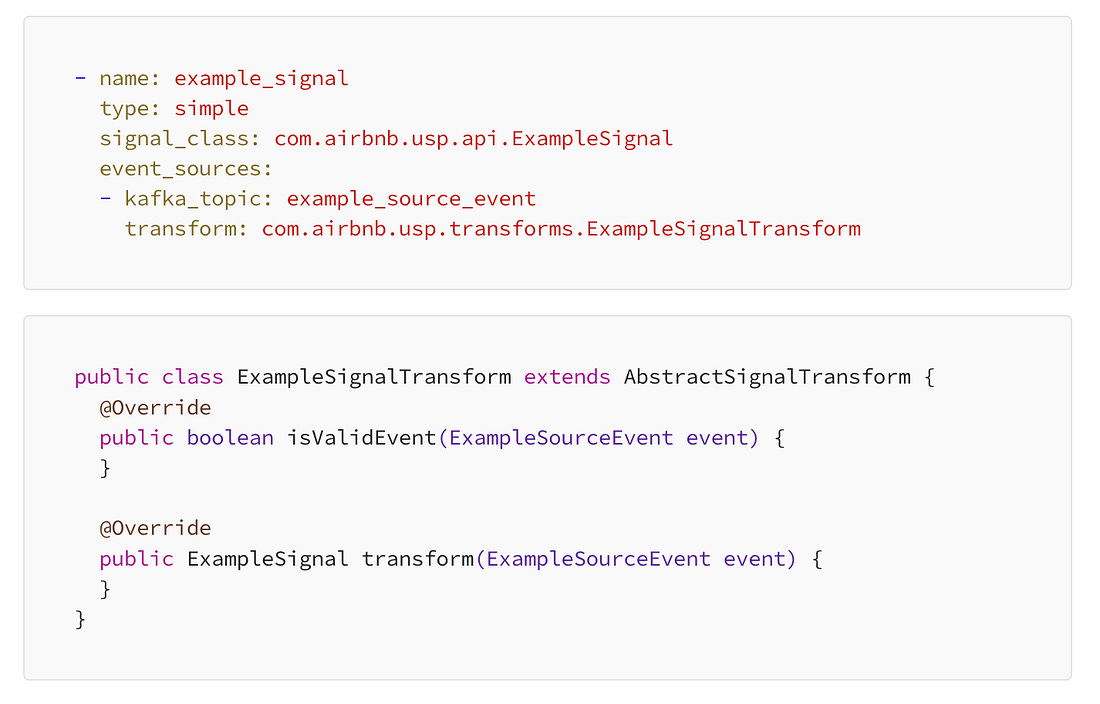
Source: Airbnb Tech Blog There are two core signal types:
Simple User Signals: A direct mapping from a Kafka event to a signal.
Join Signals: A real-time join of two Kafka sources using a shared key.
User Signals
These are the building blocks. Each user signal represents a stream of recent activity (searches, views, bookings, wishlists) attached to a user ID and timestamped for querying.
Engineers use a config file to define a new signal, and the heavy lifting happens in the transform class.
A few things to note:
Validation is built in. Signals can reject noisy or malformed events up front.
Transformations are composable. Every signal becomes a structured object and something the product logic can use.
Join Signals
Sometimes, a single event isn’t enough. Maybe, there is a need to join them. For example:
A page view with a user session
A click event with a listing metadata update
A wishlist add with trip intent signals
Rather than batch-processing this later, USP supports Join Signals: real-time stateful joins between two Kafka streams using a shared key.
To support this, a Join Signal configuration needs to be written. Under the hood, Flink does the join in real-time. RocksDB acts as the state store to hold intermediate join keys, and the result is a merged signal with richer context: ready to feed into ML models, personalization rules, or session-based analysis.
User Segments
A User Segment is a logical group: a cohort of users who match a behavioral pattern or intent.
In most systems, user segmentation is a batch job. You run a SQL query once a day, label users as “engaged” or “likely to churn,” and hope that snapshot is still relevant tomorrow.
That doesn’t cut it when your product needs to react to user intent as it forms.
Airbnb’s User Signals Platform flips the script. With User Segments, engineers can define dynamic cohorts that update in near real-time, triggered by live user actions, not stale offline data.
The segment is defined by:
A triggering condition (for example, a search or a wishlist add).
A start time.
An expiration time, which removes the user if they go inactive or meet some end condition.
These segments are recalculated on the fly, based on live signals flowing through the system.
Let’s say they want to target users who are actively planning a trip: people who are more likely to book in the next few days.
Here’s how segmentation might look:
A user enters the “Active Trip Planner” segment when they perform a search on Airbnb.
They stay in that segment for up to 14 days, unless they make a booking earlier.
Every time they search again, the expiration window resets, keeping them in the cohort.
This segment powers things like trip recommendation modules, push notifications (for example: “Still looking for a beach house?”), and custom homepage experiences. Since it's built on streaming logic, updates happen within seconds of user activity, not hours later after a batch job finishes.
Session Engagements
Most personalization systems are great at long-term memory: what you searched for last week, which cities you’ve favorited, and what kind of stays you usually book.
But they often miss the recent stuff.
Session engagements feature of the USP fixes that. It lets the platform answer queries like:
“What is the user focused on right now?”
“What kinds of listings are they engaging with in this session?”
“Are they actively evaluating, or passively browsing?”
Instead of looking at user behavior in aggregate, session engagements look at bursts of activity within a session window covering short, meaningful slices of time that capture a user’s current goal or intent.
See the diagram below:
Session engagements are powered by Flink streaming jobs that ingest transformed signals (from upstream user actions), group them by user ID, and process them in windowed intervals using two patterns:
Sliding Windows
They are fixed-size windows that advance by a smaller step.
For example, a 10-minute window sliding every 5 minutes. It is useful for rolling insight, such as “What kind of listings is this user clicking every 10 minutes?”
Session Windows
These are dynamically sized windows based on inactivity gaps. For example, start a session when the user clicks and close it after 30 minutes of silence.
This is useful for natural interaction clusters, such as listings viewed in a single burst of planning.
Flink Stability with Hot Standby
One of the most critical pieces of a real-time stream processing system is operational resilience. You can have the smartest signal logic, the fastest queries, the cleanest data pipeline, but if your jobs stall when a server crashes, it will cause trouble.
Airbnb hardened its Flink deployment against exactly this kind of failure, with a simple but effective strategy: hot standby Task Managers.
Rather than waiting for Kubernetes to create new pods during failure, the team pre-provisions extra Task Managers that sit idle but are ready. These hot standbys are kept warm and registered with the Flink JobManager, so when failure hits, they can pick up tasks immediately.
See the diagram below:
This helps achieve zero cold-start lag for task reassignment and faster recovery time (seconds instead of minutes). There is also a lower event backlog risk with this setup.
Conclusion
Airbnb’s User Signals Platform isn’t a prototype. It’s a production-grade engine powering critical personalization across one of the largest travel platforms in the world.
Here’s what the system is doing today in terms of scale:
Processing over 1 million events per second.
100+ Flink jobs in production.
70K queries per second on the USP service layer.
In a way, USP is part of the core Airbnb infrastructure, running across dozens of teams, all contributing their signal definitions, segments, and use cases.
Even with all this machinery in place, the team sees room for growth, especially in how they handle asynchronous compute. The plan is to go further in smarter pipeline-level orchestration, pluggable execution backends, and end-to-end compute graphs.
It’s tempting to look at systems like this and focus on the streaming tech. But what makes the User Signals Platform successful isn’t just Flink or Kafka or RocksDB.
It’s the design choices such as:
Embracing append-only data for resilience
Hiding complexity behind clean developer abstractions
Treating operational resilience as a first-class concern
The philosophy also matters: real-time data isn’t valuable unless it’s usable. Teams across the company can define signals, derive insights, and deploy personalized experiences without becoming stream engineers.
References:
SPONSOR US
Get your product in front of more than 1,000,000 tech professionals.
Our newsletter puts your products and services directly in front of an audience that matters - hundreds of thousands of engineering leaders and senior engineers - who have influence over significant tech decisions and big purchases.
Space Fills Up Fast - Reserve Today
Ad spots typically sell out about 4 weeks in advance. To ensure your ad reaches this influential audience, reserve your space now by emailing sponsorship@bytebytego.com.
Like
Comment
Restack
© 2025 ByteByteGo
548 Market Street PMB 72296, San Francisco, CA 94104
Unsubscribe
by "ByteByteGo" <bytebytego@substack.com> - 11:35 - 21 Apr 2025 -
A leader’s guide to managing tariff-related uncertainty
Leading Off
Prepare for change Brought to you by Alex Panas, global leader of industries, & Axel Karlsson, global leader of functional practices and growth platforms
Welcome to the latest edition of Leading Off. We hope you find our insights useful. Let us know what you think at Alex_Panas@McKinsey.com and Axel_Karlsson@McKinsey.com.
—Alex and Axel
Tariffs are top of mind for business leaders as policies and market conditions continue to shift. How can leaders make sense of this uncertainty to mitigate risks to their businesses and seize potential opportunities? To start, developing a better understanding of tariffs and their likely effects—in both the short and the long term—is critical. This week, we look at how leaders can prepare their organizations to navigate this challenging and fast-changing environment.
With the COVID-19 crisis still fresh in their minds, business leaders face a new global economic disruption and the questions it raises. Among them: How long might tariffs and trade controls be in place? What economic consequences will they have? When will we return to “normal”? Traditional forecasting and planning methods are not suitable to meet the moment as the tariff landscape evolves, say McKinsey’s Cindy Levy, Mihir Mysore, Shubham Singhal, and Varun Marya. Instead, they recommend that companies establish a geopolitical nerve center: that is, “a central hub that tracks new developments in global trade, plans across several horizons, and guides decision-makers on ways to mitigate the impact of the expanding tariffs and trade controls.” A nerve center should include cross-functional teams that can address the impacts of tariffs across the company over the short, medium, and long term. It should also be supported by a central planning team that uses analytics to enable fast decision-making. Many companies found nerve centers to be an essential resource during the pandemic—and a similar approach can be effective now, as “tariffs have emerged as the most urgent topic for many businesses and the world economy and will likely remain so for most of 2025,” the authors say.
That’s the share of every major region’s consumption of a critical resource, good, or service that is imported. According to McKinsey’s Jeongmin Seong, Michael Birshan, Olivia White, Sven Smit, and their coauthors in a report on changing trade relationships, “Even in sectors for which a region is a net exporter, it may still be dependent on imports for many crucial products.”
That’s McKinsey Partner Ziad Haider on why leaders need a strategy for engaging with their people during times of geopolitical instability. Understanding how to talk to employees about sensitive geopolitical topics is important to building organizational resilience during uncertain times. The goal, Haider says, “is to hold together the fabric of a global institution amid swirling centrifugal forces that threaten to rip it apart.”
A decade ago, many experts predicted that the global flow of goods, money, data, and people would continue to expand smoothly. Now, companies have to confront the reality that the world has become more fragmented, says Robert Hormats, a former US government official and adviser to many global companies. “Companies making big financial investments need to have both a degree of understanding of what’s going to happen over the next five to ten years and the agility and resilience to turn on a dime in the face of unexpected developments,” Hormats says in an interview with McKinsey Senior Partner Cindy Levy. He notes the importance of companies developing trusting relationships with countries beyond their home markets and learning how to work best with their governments. “This isn’t just about lobbying for what they want,” Hormats says. “It’s also about mutual education, in which both businesses and governments improve their understanding of the implications of existing and future regulation, including—but not only—around new technologies.”
Tariffs are not the only rapidly evolving area for leaders to focus on as they navigate the global trade landscape. A growing number of export controls is limiting movement of sensitive services and products—particularly technology—across borders, which affects industries such as mobile communications, semiconductors, AI, and quantum computing. It’s critical for companies to assess the impact of export controls on their global strategies, in terms of both risks and competitive advantages, say McKinsey’s Cindy Levy, Matt Watters, Shubham Singhal, and their coauthors. Steps can include considering whether to include sensitive technologies in product designs, reassessing supply chains of existing products, and ensuring that legal and compliance teams are properly trained on export controls. “Organizations that monitor and understand the implications of evolving export rules can seize opportunities and get ahead of less savvy competitors,” the authors say.
Lead by building geopolitical resilience.
— Edited by Eric Quiñones, senior editor, New York
Share these insights
Did you enjoy this newsletter? Forward it to colleagues and friends so they can subscribe too. Was this issue forwarded to you? Sign up for it and sample our 40+ other free email subscriptions here.
This email contains information about McKinsey’s research, insights, services, or events. By opening our emails or clicking on links, you agree to our use of cookies and web tracking technology. For more information on how we use and protect your information, please review our privacy policy.
You received this email because you subscribed to the Leading Off newsletter.
Copyright © 2025 | McKinsey & Company, 3 World Trade Center, 175 Greenwich Street, New York, NY 10007
by "McKinsey Leading Off" <publishing@email.mckinsey.com> - 04:54 - 21 Apr 2025 -
Asia’s rise on the world stage
On McKinsey Perspectives
Reasons for optimism Brought to you by Alex Panas, global leader of industries, & Axel Karlsson, global leader of functional practices and growth platforms
Welcome to the latest edition of Only McKinsey Perspectives. We hope you find our insights useful. Let us know what you think at Alex_Panas@McKinsey.com and Axel_Karlsson@McKinsey.com.
—Alex and Axel
•
Cause for optimism. Despite ongoing geopolitical and economic uncertainty, government leaders and executives in Asia still have much to be optimistic about in 2025 and beyond, McKinsey Senior Partner Joe Ngai shares in a recent episode of McKinsey’s Future of Asia Podcast. India continues to see strong economic growth, while Japan’s economy is displaying encouraging signs of recovery. At the same time, geopolitics will stay top of mind for CEOs as East–West trading relationships evolve, Ngai explains.
•
Global powerhouse. Asia’s economies have emerged as the world’s new majority and now account for more than half of global growth, McKinsey Senior Partner Gautam Kumra explains. Consumers in Asia are also growing more prosperous: By 2030, more than two-thirds of the world’s middle-income households are expected to be in Asia, according to Kumra. Listen to the interview on McKinsey’s Future of Asia Podcast to understand critical themes around Asia’s future, including technology and trade.
—Edited by Belinda Yu, editor, Atlanta
This email contains information about McKinsey's research, insights, services, or events. By opening our emails or clicking on links, you agree to our use of cookies and web tracking technology. For more information on how we use and protect your information, please review our privacy policy.
You received this email because you subscribed to the Only McKinsey Perspectives newsletter, formerly known as Only McKinsey.
Copyright © 2025 | McKinsey & Company, 3 World Trade Center, 175 Greenwich Street, New York, NY 10007
by "Only McKinsey Perspectives" <publishing@email.mckinsey.com> - 01:30 - 21 Apr 2025 -
Re: Cosmetics and Personal Care Industry contacts list
Hi, Good day to you!
We have successfully built a verified file of Cosmetics and Personal Care Industry contacts with accurate emails. Would you be interested in acquiring Cosmetics Industry Professionals List across North America, UK, Europe and Global?
Few Lists:
· Cosmetics & Personal Care Product Manufacturers
· Fragrance & Home Care Manufacturers
· Cosmetics & Personal Care Brand Owners
· Perfume & Toiletries Manufacturers
· Private Label & Contract Manufacturers
· Dermatologist Vs Dermatology Assistant
· Industry Consultants,Packaging Professionals & More
· Salon & Hotel Chains
· Cosmetic Chemist, Skincare Formulator
· Product Development Manager
· Regulatory Affairs Specialist
Our list comes with: Company/Organization, Website, Contacts, Title, Address, Direct Number and Email Address, Revenue Size, Employee Size, Industry segment.
Please send me your target audience and geographical area, so that I can give you more information, Counts and Pricing just for your review.
Thank you for your time and consideration. I eagerly await your response.
Best regards,
Alexis Sidney| Customer Success Manager
B2B Marketing & Tradeshow Specialist
PWe have a responsibility to the environment
Before printing this e-mail or any other document, let's ask ourselves whether we need a hard copy
by "Alexis Sidney" <alexis@infomediareach.com> - 12:01 - 21 Apr 2025 -
Last chance: How to harmonize data and empower ERP
See how to use your data to optimize key processes. Register now.
SAP WEBCAST
Fuel your most important business processes with AI-ready data that is connected, actionable, and contextualTime is running out to register for our webcast, happening tomorrow.
Attend SAP's webcast "Fuel your most important business processes with AI-ready data that is connected, actionable, and contextual" to explore how to:
- Harmonize all your data and analytics to lay a foundation for AI.
- Bring AI to your ERP to automate and optimize decision-making.
- Integrate all your solutions to take advantage of end-to-end process automation.
Don’t miss this chance to see how AI-enabled cloud ERP can help your business optimize.
Register today!

Contact us
See our complete list of local country numbers



SAP (Legal Disclosure | SAP)
This e-mail may contain trade secrets or privileged, undisclosed, or otherwise confidential information. If you have received this e-mail in error, you are hereby notified that any review, copying, or distribution of it is strictly prohibited. Please inform us immediately and destroy the original transmittal. Thank you for your cooperation.
You are receiving this e-mail for one or more of the following reasons: you are an SAP customer, you were an SAP customer, SAP was asked to contact you by one of your colleagues, you expressed interest in one or more of our products or services, or you participated in or expressed interest to participate in a webinar, seminar, or event. SAP Privacy Statement
This email was sent to info@learn.odoo.com on behalf of the SAP Group with which you have a business relationship. If you would like to have more information about your Data Controller(s) please click here to contact webmaster@sap.com.
This offer is extended to you under the condition that your acceptance does not violate any applicable laws or policies within your organization. If you are unsure of whether your acceptance may violate any such laws or policies, we strongly encourage you to seek advice from your ethics or compliance official. For organizations that are unable to accept all or a portion of this complimentary offer and would like to pay for their own expenses, upon request, SAP will provide a reasonable market value and an invoice or other suitable payment process.
This e-mail was sent to info@learn.odoo.com by SAP and provides information on SAP’s products and services that may be of interest to you. If you received this e-mail in error, or if you no longer wish to receive communications from the SAP Group of companies, you can unsubscribe here.
To ensure you continue to receive SAP related information properly, please add sap@mailsap.com to your address book or safe senders list.
by "SAP" <sap@mailsap.com> - 10:35 - 20 Apr 2025 -
Precision Sheet Metal Solutions Tailored for Your Business Needs
Dear info,
This is Lisha Zhu from Hangzhou Snowcom Technology Co., LTD. We are engaged in the business of sheet metal processing and offer a wide range of products such as chassis, racks and WLAN equipment.
Our commitment to quality and innovation has enabled us to gain a competitive edge in the market. We have the capacity to handle both small and large orders with equal dedication and efficiency.
Our website http://www.hzsnowcom.com/english.php and our presence on Bestsuppliers.com are platforms where you can explore our offerings in detail.
Should you be interested in our products or need any further information, please don't hesitate to reach out to me at +86 - 17856097353. We are eager to start a conversation and see how we can collaborate to mutual benefit.
Thank you for your time and consideration.
Warm regards,
Lisha Zhu
Sales Manager, Hangzhou Snowcom Technology Co., LTD.
by "Ornella Khalifh" <ornellakhalifh151@gmail.com> - 09:34 - 20 Apr 2025 -
License successfully activated.
Dear info@learn.odoo.com,
Thank you for your interest in Inventory. Please find attached license for Inventory
License details:Product: Inventory
Terminal Key: 7F858226-6132-8B49-8E0F-7F9585005FD8
Valid to: 20 May 2025
Thanks.OROPOS Team
by noreply@shop.orocube.com - 06:43 - 20 Apr 2025 -
License successfully activated.
Dear info@learn.odoo.com,
Thank you for your interest in OROPOS. Please find attached license for OROPOS
License details:Product: OROPOS
Terminal Key: 7F858226-6132-8B49-8E0F-7F9585005FD8
Valid to: 20 May 2025
Thanks.OROPOS Team
by noreply@shop.orocube.com - 06:42 - 20 Apr 2025






